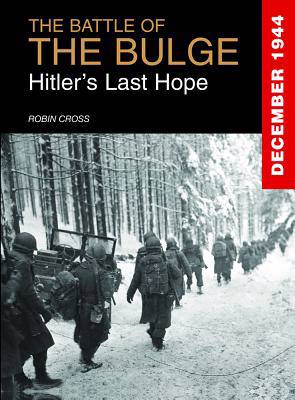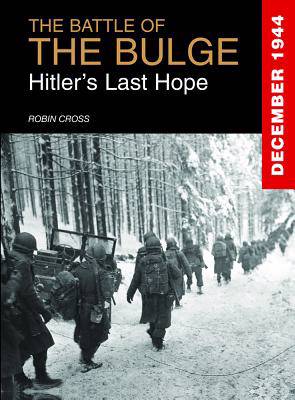
- Retrait gratuit dans votre magasin Club
- 7.000.000 titres dans notre catalogue
- Payer en toute sécurité
- Toujours un magasin près de chez vous
- Retrait gratuit dans votre magasin Club
- 7.000.000 titres dans notre catalogue
- Payer en toute sécurité
- Toujours un magasin près de chez vous
Description
In December 1944, the German Army launched an attack through the Ardennes forest that aimed to seize the port of Antwerp and cut the Allied supply lines, hoping to force the Western Allies either to delay their advance on Berlin or agree a peace settlement. The Battle of the Bulge: Hitler's Last Hope is a comprehensive history of Germany's last offensive in World War II, the failure of which undoubtedly hastened the war's end. The book begins with a study of the background to the battle, and a description of events in the West leading up to the offensive, including the D-Day landings and Operation Market Garden. The strategic importance of Antwerp as a major port close to the Allied lines is considered, and the factors which led Hitler to believe that an attack through the Ardennes in winter could be successful. The poor state of the Allies' defences and the unreadiness of the American troops on the frontline is covered in depth, as are the special tactics used by the Germans for the attack, most notably Otto Skorzeny's 'Greif' commandos dressed in American uniforms. The Battle of the Bulge shows how, after initial German success, a bitter struggle developed between the German and American forces for the key town of Bastogne. The book details how the offensive lost momentum and thus any chance of success, particularly once the skies cleared and the Allies were able to use their fighter-bombers to attack key German targets. Meanwhile, Patton's Third Army was able to launch a counter-offensive within days, pushing the Germans back. The book's authoritative text is complemented with detailed maps that explain the troop movements that took place during the battle. It also includes appendices with information on the orders of battle of both sides. The Battle of the Bulge is a comprehensive account of the German attempt to relive the glorious success of 1940, and the consequences of the offensive's failure for Hitler's Third Reich.
Spécifications
Parties prenantes
- Auteur(s) :
- Editeur:
Contenu
- Nombre de pages :
- 176
- Langue:
- Anglais
Caractéristiques
- EAN:
- 9781782741367
- Date de parution :
- 01-04-14
- Format:
- Livre relié
- Format numérique:
- Genaaid
- Dimensions :
- 193 mm x 249 mm
- Poids :
- 816 g







